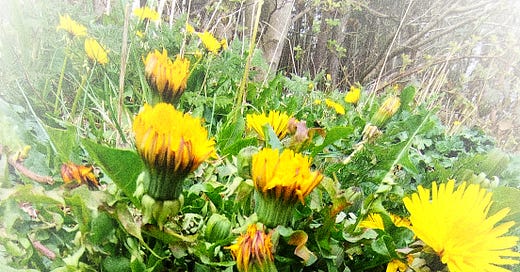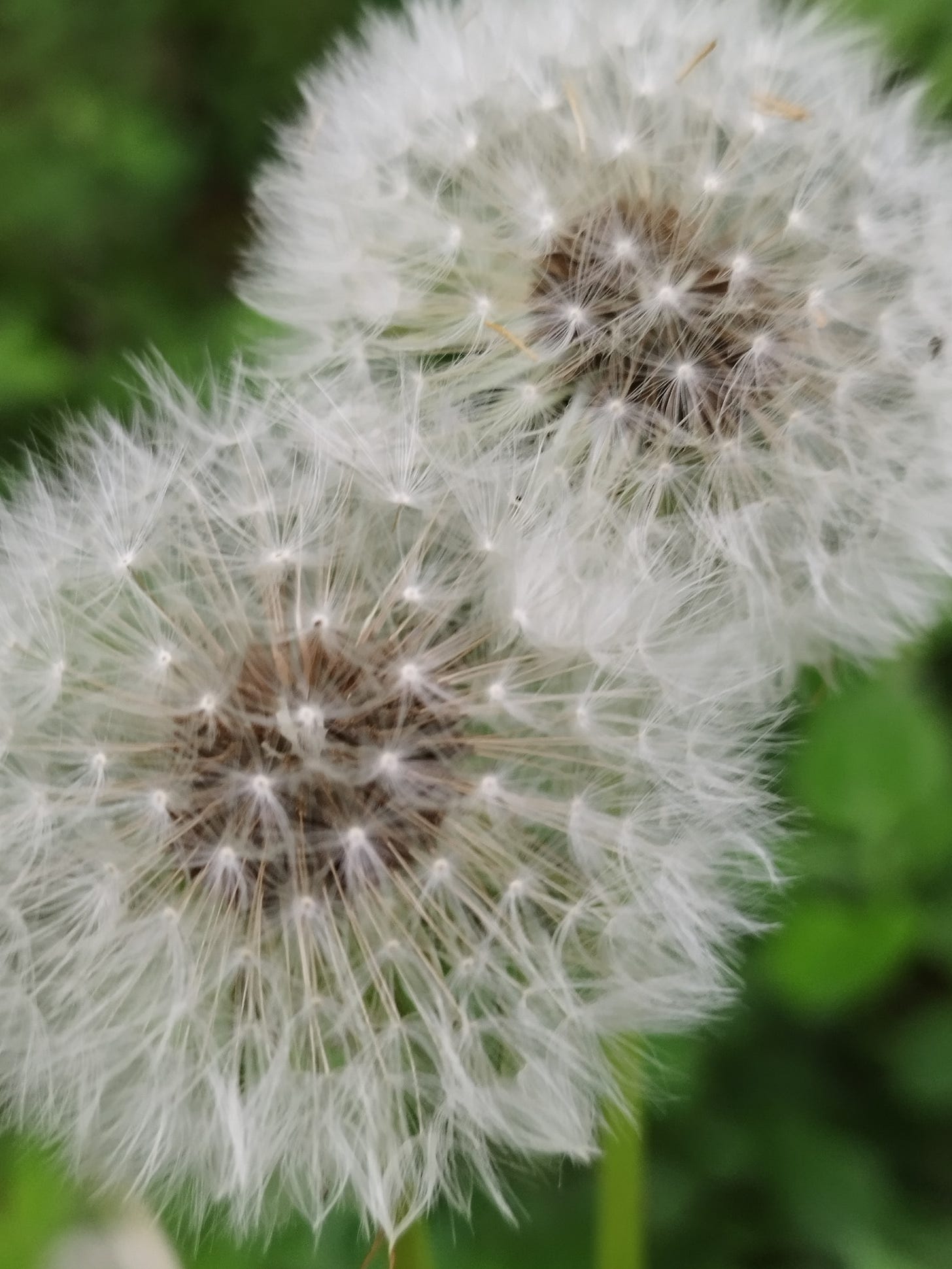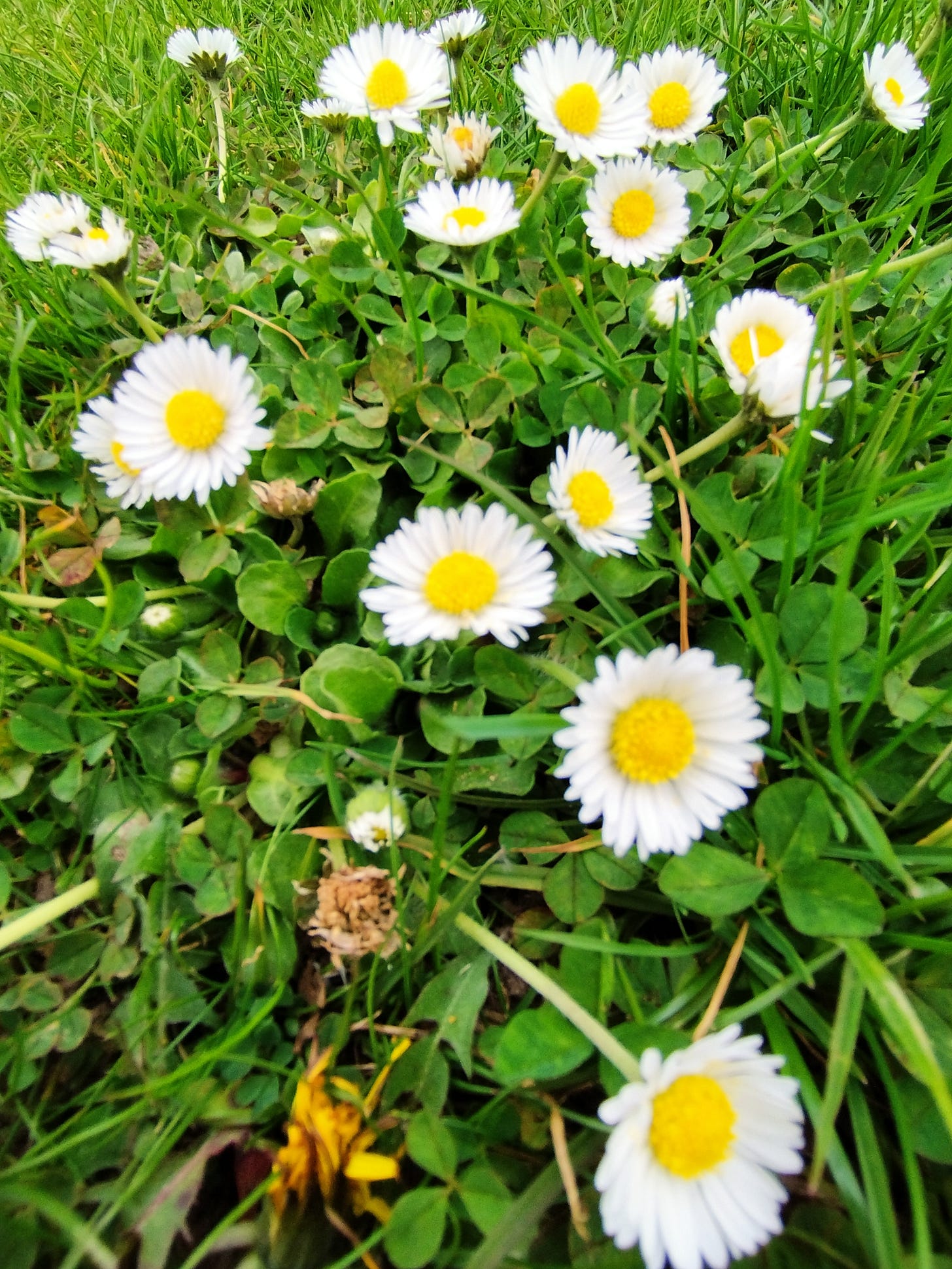Just as the daffodils begin to fade, up pops another gem from nature that I defy anyone to ignore. Its splendid display of cheeriness and joy always makes me smile. Once you have got to know a bit more about this amazing plant, you can’t help but to welcome its presence.
Dandelions bright,
Discs of sunshine, rays spread wide.
Help yourselves, dear bees!
Taraxacum officinale
Dandelion
Dent de Lion from the French meaning tooth of the lion, describing the leaf shape
Common names: cankerwort, blowball, lion’s tooth, milk witch
I have always had a fondness for dandelions. As a child, with four tortoises to care for, I made it my mission to seek out the juiciest leaves to feed them, as it became apparent that the deep green, jagged leaves were a firm favourite. Shelly was very good at pushing the other three out of the way to select the best ones for herself. Fred was partial to the golden flowers too.
Weeds?
We have to acknowledge that dandelions are not everyone’s cup of tea, though it is true, they do make a tasty cup. When lawns are meant to be pristine and manicured there is no place for such a blousy show off. They are clever though, even when the grass has been cut, in a few short hours another one seems to pop up. If gardeners want to get rid of them from their lawn then they have to work very hard to eliminate them. Weedkiller, smothering, mulching and digging deep down to remove the whole root are all methods that can be used in an attempt to show them who’s boss. It must be tricky to live with someone who treats them as weeds when you are trying to save them.
Herbs?
The majority of the dandelion is edible unless you are allergic to them (always do your research). According to the College of Neuropathic Medicine’s website, there are many health benefits from the humble dandelion. The leaves are full of nutrients, the young ones can be eaten raw, the older, more bitter leaves can be cooked. The flowers contain antioxidants and polyphenols and the root can be roasted and eaten to help detoxify the liver or gallbladder. Again, it is sensible to understand that whenever there are health benefits, there may also be contraindications so make sure you know what you are doing before ingesting. If you are picking your own, avoid any that have been in contact with weed killer or near domestic pets. If in doubt, leave it be. Personally, I have eaten the young leaves in a salad and often drink dandelion tea (purchased from a health food shop). Both are delicious.
Planet savers?
For me, it is the source of nectar they provide to insects such as bees, hover flies and butterflies that I love them for. They are one of the earliest to flower in the year and so are an excellent source of food for these tiny emerging creatures, when there are not many flowers to choose from. They keep up their important job until well into October. The RHS puts them on the list of plants for pollinators along with red clover, forget-me-nots and honeysuckle. So, a crucial part of our ecosystem.
The globe of genius
Survival
One thing to understand is that dandelions know how to survive. According to the charity Garden Organic’s website each dandelion seed head has up to 400 seeds and a plant can produce 12,000 seeds. The seedheads are a work of natural engineering genius. To me, their “clocks” are a thing of outstanding beauty. Take a few moments to study and marvel at them when you next have the chance. And the best part is when you pick them up and hold them up to the breeze, the mindful experience you have watching them floating in the air as they disperse is second to none. The seeds can travel up to half a kilometer from the parent plant with their parachute like structure. Once landed, the ripe seed has a 90% germination rate. Plants can last 13 years. Folklore has you making a wish with every blow of the seed head and telling the time to the nearest hour depending on how many blows are required to empty the seeds off the top of the stalk. The roots of the dandelion are robust too. If severed, it can regenerate easily which is why, if gardeners try to pull them out but leave some root behind, there will be a plant in its place in no time.
Let’s celebrate these special plants
If, like me, you do have a soft spot for the underdogs of the plant world aka the weeds, I highly recommend Understorey: a year among weeds by
. I had the pleasure of seeing Anna at Alnwick Book Fest this year. Sitting in the room full of nature lovers and hearing her passion for weeds made me feel quite emotional. At last, someone who gets that not all plants can be sunflowers; some are quietly doing their own thing playing their part in the ecosystem without too much interference from humans. That is unless they get out their sprays to obliterate them. Maybe I can relate to the weeds more than the blooms with the RHS gold medals. After all, I am named after one!






I'm always excited to find a dandelion in my garden because my guinea pigs love them so I can never have enough of them. I don't really have many weeds in my garden as I mulch everything so I've never felt a particular dislike to any or ever had a problem with them. I don't keep a lawn either so have no bones to pick with any plants that might spoil its aesthetics.
I love dandelions. I used to have a pet rabbit who also loved dandelions!
It's very noticeable that there are far fewer small beetles and flies on most dandelions (here up in Edinburgh) than there used to be. As well as a noticeable decrease in larger insects.